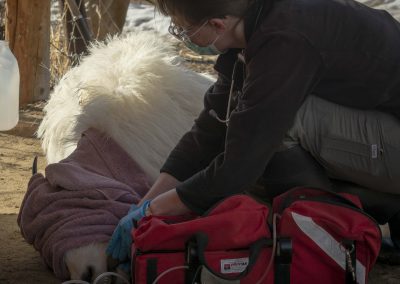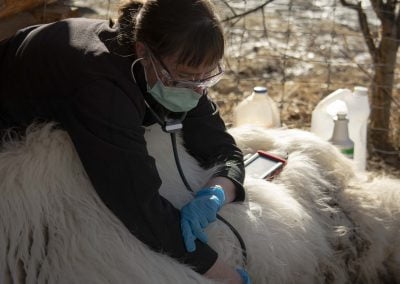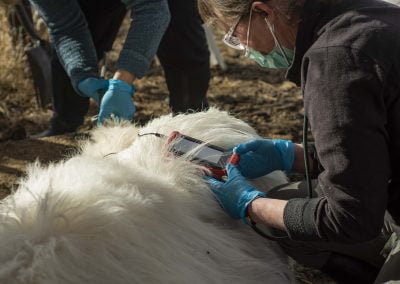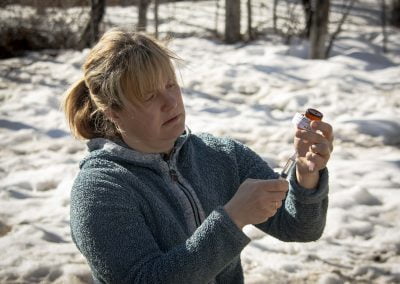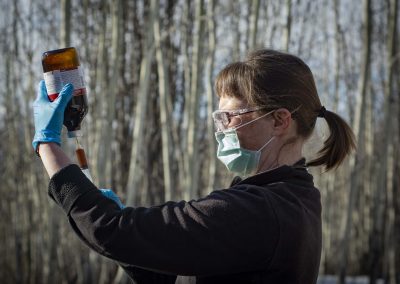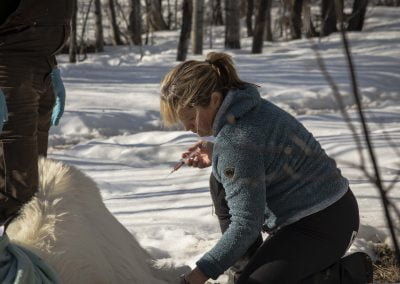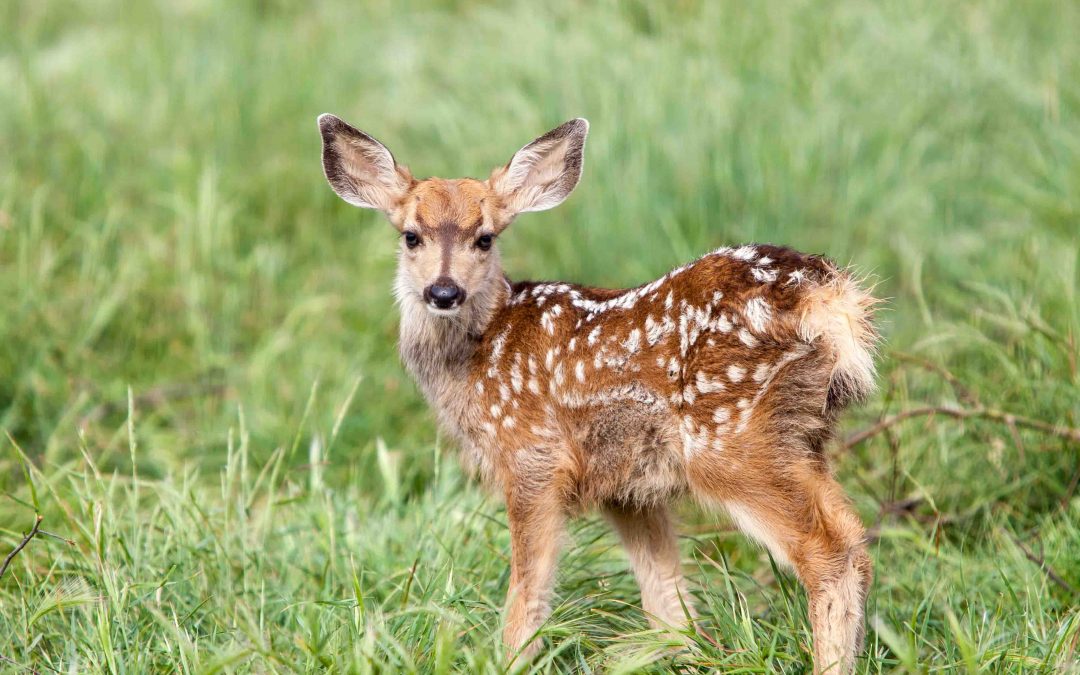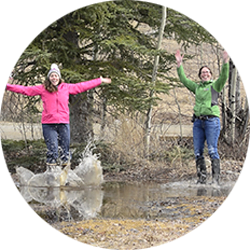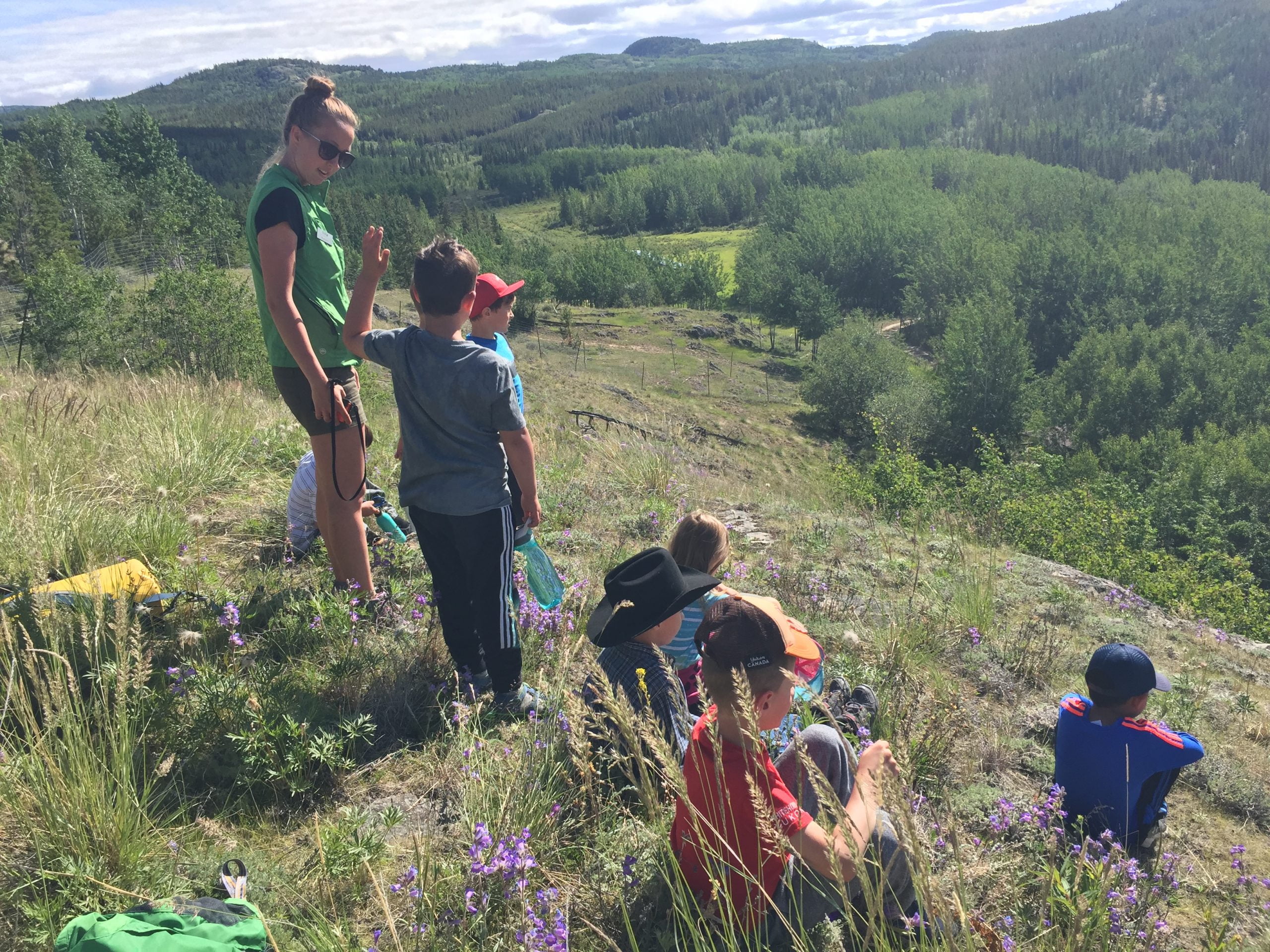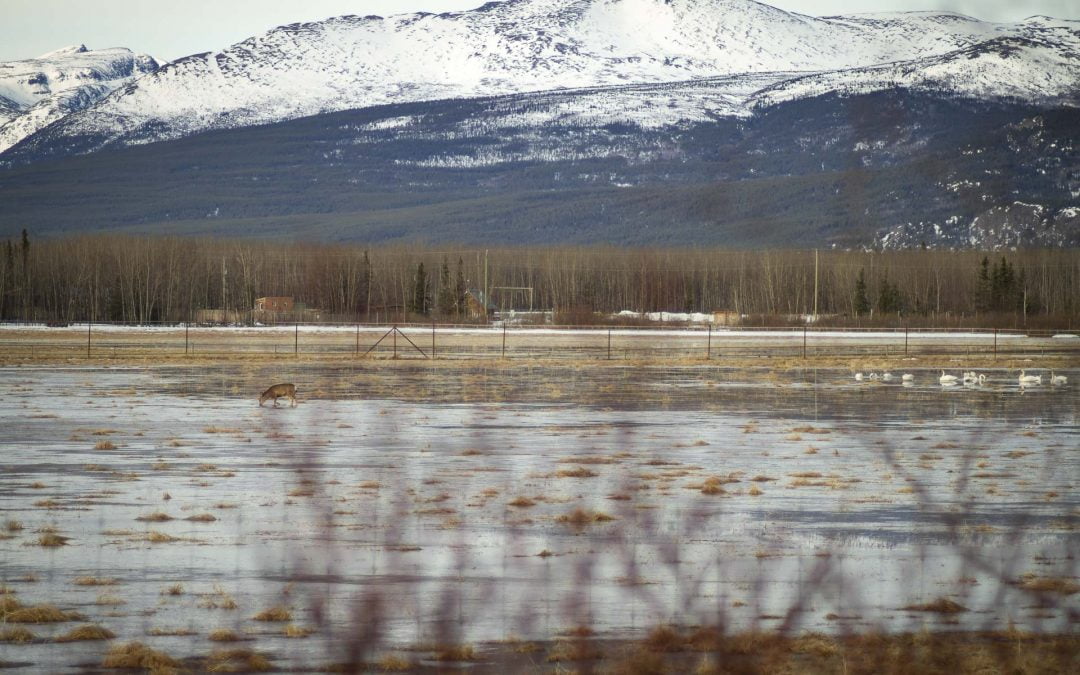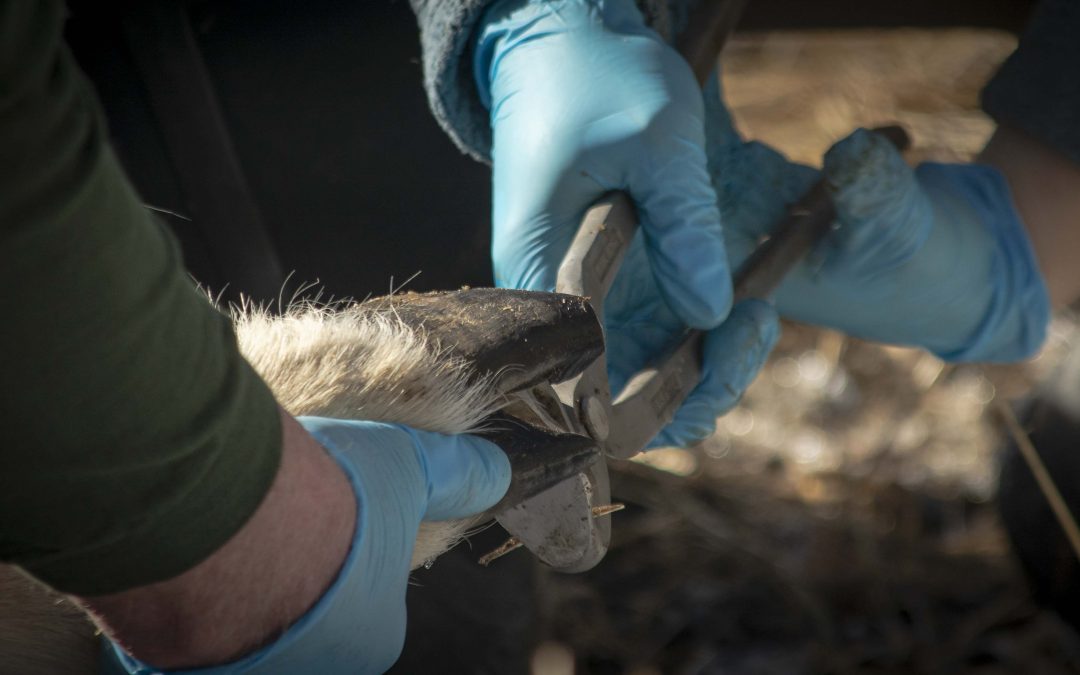
Doctor visit: Mountain Goats!
Doctor visit: Mountain Goats!
During daily rounds to check on the health of the residents, Animal Care staff notice that the eldest male goat, Geronimo, appears to have a cracked hoof. Staff veterinarian Dr. Maria Hallock is concerned he may have cracked it close to the blood supply. This leaves him open to the possibility of an infection, which is more likely with spring weather – melting snow and lots of mud.
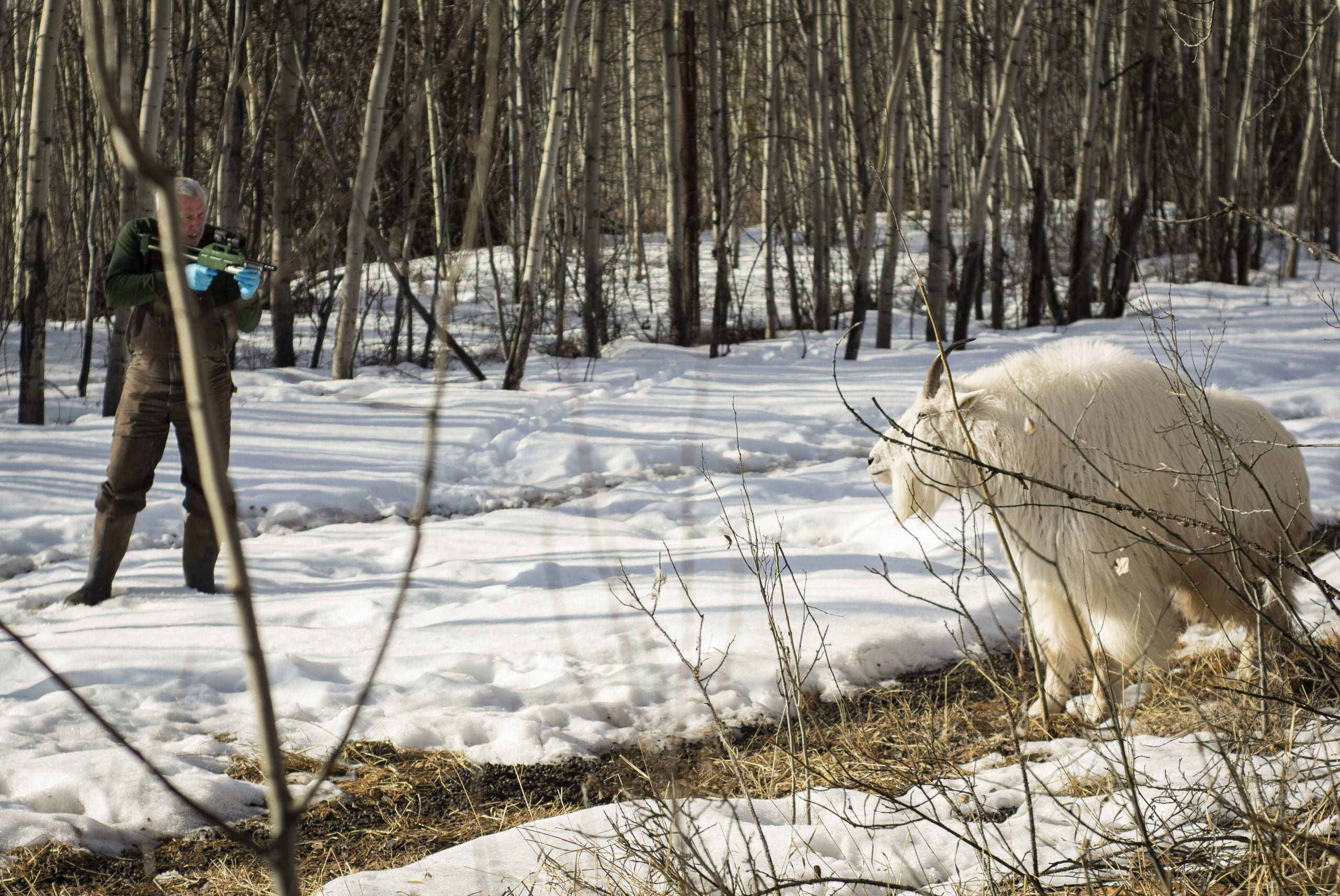
Randy, Director of Operations, uses a dartgun for distance delivery of sedative drugs to the young male, or billy, goat.

Hooves and nails are both composed of the same protein, keratin. Trimming hooves is not unlike humans trimming their fingernails, or taking their pet dog to the vet for a nail trim.
Dr. Maria and Randy begin trimming hooves, Julie monitors Geronimo’s health while under general anesthetic as Ensio records times and values such as heart rate.
The eldest billy, Geronimo, receives intranasal oxygen. During the procedure to trim his cracked hoof, his eyes are covered to avoid stimulating him. Here, Julie monitors vital signs such as heart rate, breathing rate and temperature as Dr. Maria works to quickly trim hooves.

Geronimo’s hoof after being trimmed. The right toe was trimmed bluntly due to the crack in the hoof. The left toe is the “normal” shape after trimming
Julie injects sedative reversal intramuscularly.
The time is noted and recorded so we know when to expect Geronimo to waken.
Veterinary medical costs quickly add up. Even this simple, fast procedure cost $60 per goat for anesthetic drugs, antibiotics and pain control. Hidden costs include expertise, labour and supplies such as syringe and needles.
Photo and Video Credit: L. Caskenette

Julie Kerr
Visitor Services Coordinator
Julie is a Registered Veterinary Technologist, living and working in Whitehorse since 2012. She joined the team in May 2018. She is passionate about wildlife, nature and living in a conscious manner with both. Her free time is spent outdoors observing wild animals and ecosystems; her connection to the natural world around her brings great joy – joy she loves to share with anyone interested. Honestly? Work and life blend rather seamlessly.

